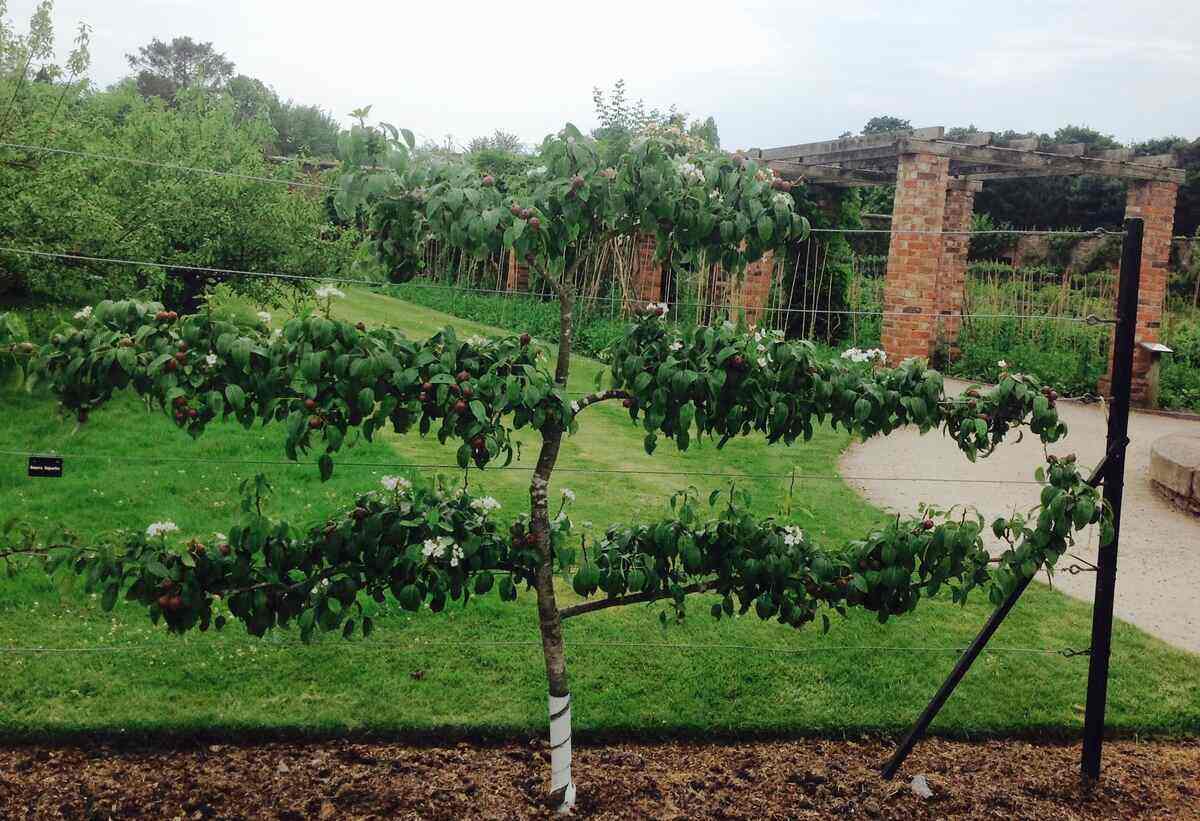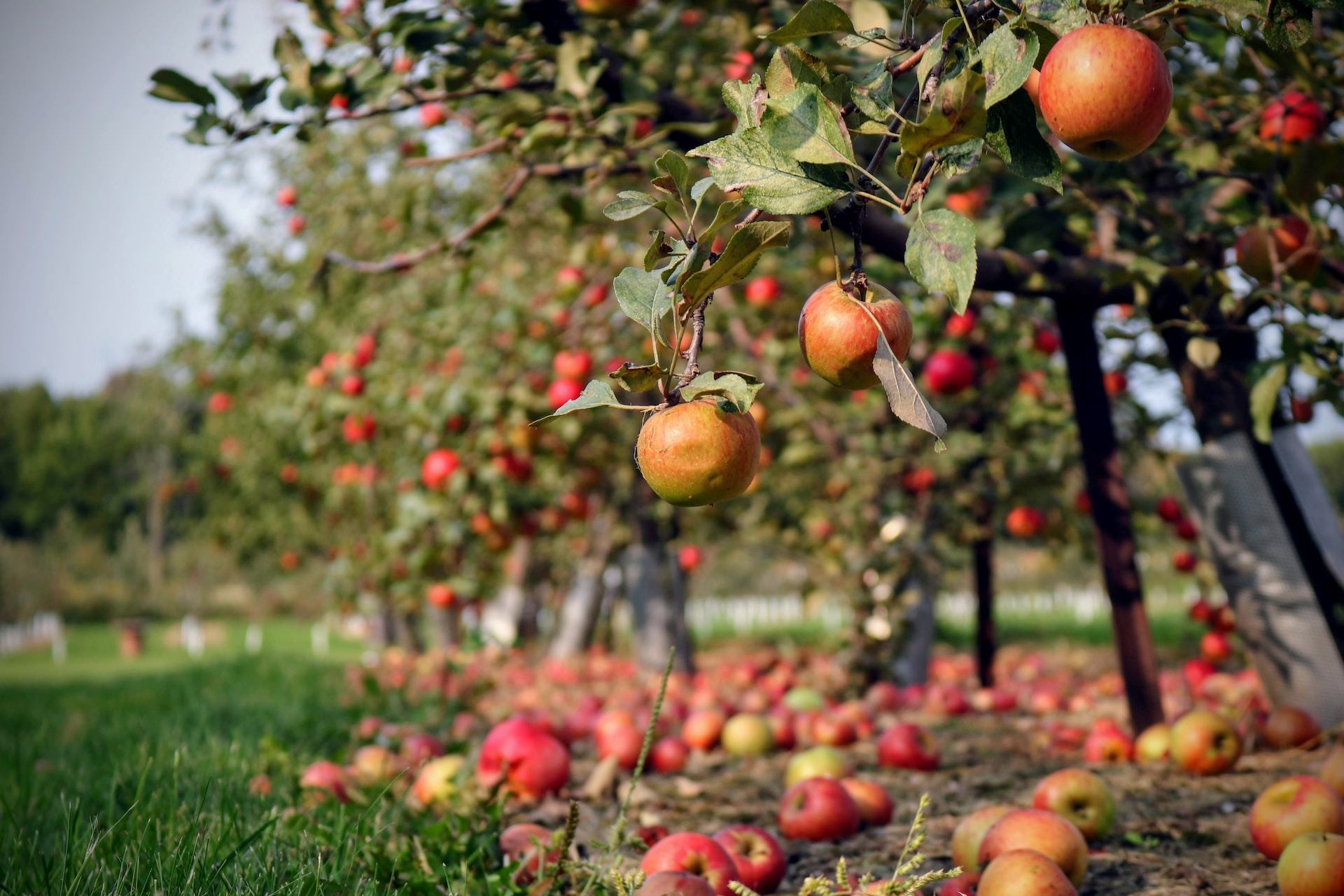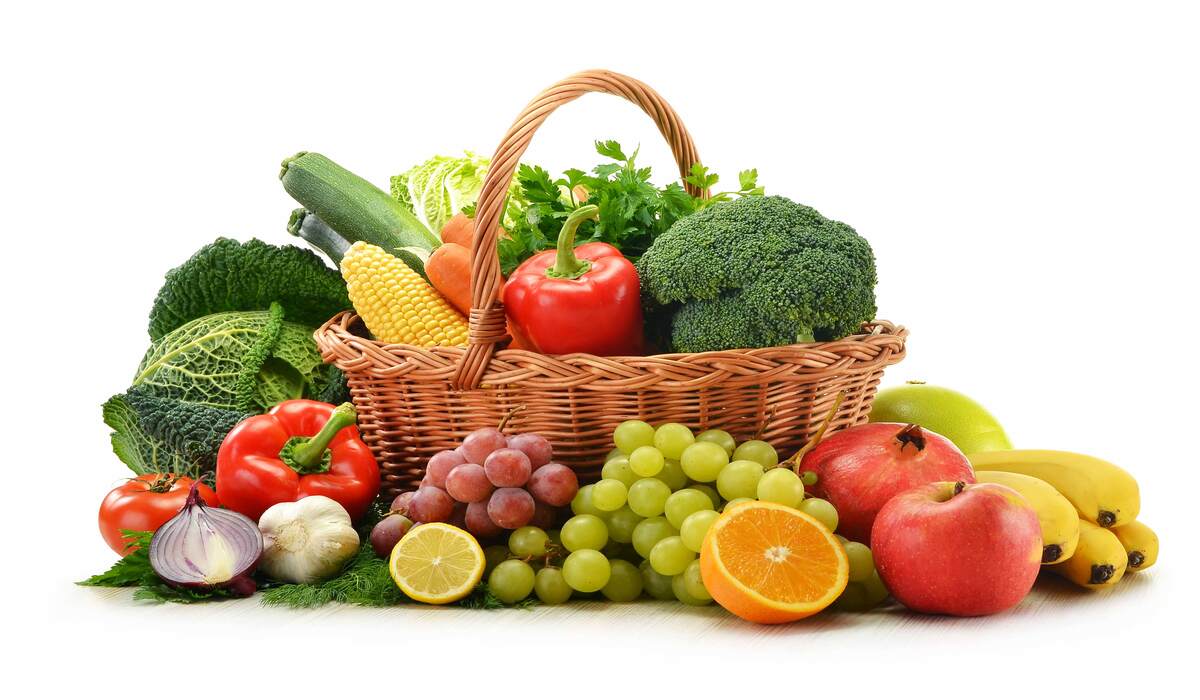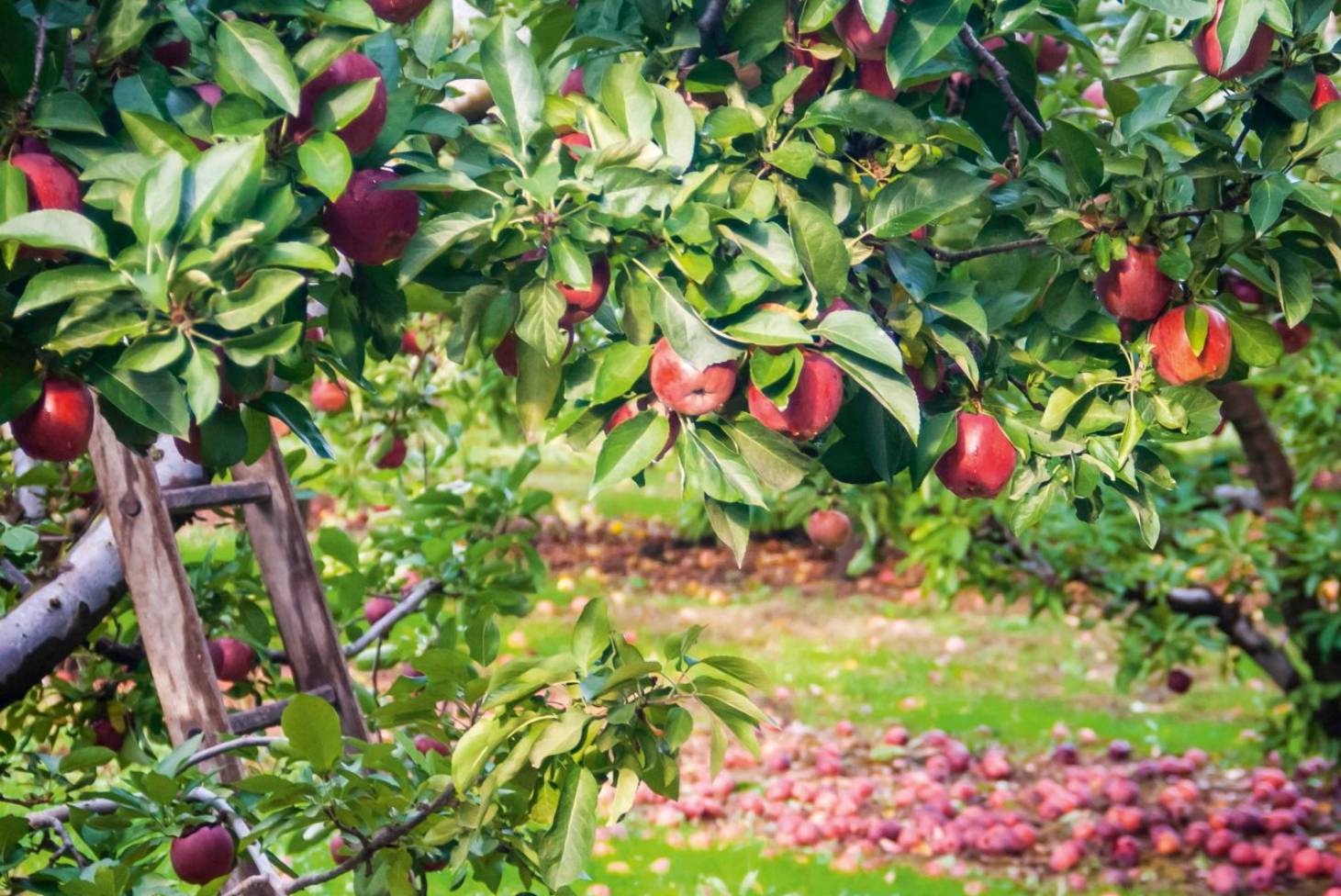Home>Types of Gardening>Edible Gardening>What Fruit Trees Are Self Pollinating


Edible Gardening
What Fruit Trees Are Self Pollinating
Published: November 5, 2023
Discover which fruit trees are self-pollinating for your edible gardening needs. Enhance your garden's productivity with self-sufficient fruit trees.
(Many of the links in this article redirect to a specific reviewed product. Your purchase of these products through affiliate links helps to generate commission for Chicagolandgardening.com, at no extra cost. Learn more)
Table of Contents
Introduction
Welcome to the world of edible gardening, where the joy of growing your own food is unparalleled. If you are a gardening enthusiast or someone who has recently developed an interest in growing fruit trees, you may have come across the term “self pollination” and wondered what it means.
Self pollination is a fascinating phenomenon that occurs when a plant can fertilize itself without the need for outside pollinators, such as bees or wind. In the world of edible gardening, self pollinating fruit trees are highly sought after, as they offer numerous benefits and make the cultivation process much easier.
Understanding the concept of self pollination is crucial for any gardener, as it not only ensures a successful harvest but also helps to maintain a healthy and productive garden. In this article, we will explore the definition of self pollination, the advantages it brings, common self pollinating fruit trees, factors that affect self pollination, and techniques to enhance it.
By the end of this article, you will have a comprehensive understanding of self pollination and be equipped with the knowledge needed to grow your own self pollinating fruit trees successfully.
Definition of Self Pollination
Self pollination is a reproductive process in plants where pollen from the male part of the flower, the stamen, is transferred to the female part, the stigma, within the same flower or within a different flower on the same plant. This process allows the plant to produce seeds and ultimately fruit without the need for external pollinators.
In self pollinating plants, the flowers contain both male and female reproductive organs, making it possible for the plant to reproduce independently. This is in contrast to cross-pollination, where pollen is transferred between two different plants of the same species, often with the help of a third party, such as insects or the wind.
Self pollination can occur through various mechanisms. Some plants have flowers that are self-fertile, meaning they can self-pollinate without any external assistance. In these plants, the stamen and stigma are in close proximity, allowing the pollen to easily reach the stigma and fertilize the ovules.
Other plants may have mechanisms to ensure self pollination in the absence of pollinators. This can include flowers that are partially self-fertile, with the ability to self-pollinate if pollinators are scarce. Additionally, some plants possess structures that help prevent self pollination when cross-pollination is preferred, such as physical barriers or timing differences between pollen release and stigma receptivity.
Self pollination is a common phenomenon in many fruit trees, such as apples, pears, and peaches. These trees produce flowers that contain both male and female reproductive parts, allowing them to self-pollinate and produce fruit without the need for additional trees for pollination.
Understanding the process of self pollination is essential for gardeners, as it provides insights into the reproductive biology of plants and helps determine the best strategies for cultivating and maintaining fruit trees.
Advantages of Self Pollinating Fruit Trees
Self pollinating fruit trees offer several advantages that make them a popular choice for gardeners. Here are some of the key benefits:
- Independent Fruit Production: One of the main advantages of self pollinating fruit trees is that they can produce fruit without the need for additional pollinators. This means that you can have a thriving fruit tree even if you don’t have access to other trees of the same species nearby. It offers greater convenience and flexibility for home gardeners with limited space or in urban areas.
- Consistent Fruit Set: Self pollinating fruit trees tend to have a more consistent fruit set compared to those that rely on cross-pollination. Since they can fertilize their own flowers, there is a higher chance of successful pollination and fruit development. This can lead to a more reliable and abundant harvest each year.
- Reduced Pollination Constraints: Some fruit trees, such as apples and cherries, require specific cross-pollination from compatible varieties to set fruit. However, self pollinating varieties of these fruits can bypass this requirement. This flexibility allows growers to have a wider selection of fruit tree varieties and reduces the constraints associated with matching pollinators.
- Increased Yield: Self pollinating fruit trees often have higher fruit yield compared to their cross-pollinating counterparts. This is because they can set fruit even when there is limited pollen available from external sources. The ability to self-pollinate ensures a sufficient supply of pollen for consistent fruit development.
- Enhanced Pollination Success: Self pollinating fruit trees are less vulnerable to external factors that can disrupt cross-pollination, such as unfavorable weather conditions or limited insect activity. By relying on their own reproductive mechanisms, these trees can overcome these challenges and maintain a higher level of pollination success.
By choosing self pollinating fruit trees for your garden, you can enjoy the benefits of convenience, consistent fruit production, higher yield, and a more reliable pollination process. These advantages make them an excellent choice for both experienced gardeners and beginners alike.
Common Self Pollinating Fruit Trees
When it comes to selecting fruit trees for your garden, choosing self pollinating varieties can make your gardening journey easier and more rewarding. Here are some of the most common self pollinating fruit trees:
- Apple Trees: Many apple tree varieties are self pollinating, meaning they can set fruit without needing pollen from a different apple tree. Examples of self pollinating apple tree varieties include Granny Smith, Gala, and Golden Delicious. However, planting multiple apple tree varieties can still enhance cross-pollination and potentially increase fruit yield.
- Pear Trees: Self pollinating pear tree varieties are popular among gardeners as they can produce fruit without needing a different pear tree for cross-pollination. Some common self pollinating pear tree varieties include Bartlett, Anjou, and Bosc. To maximize fruit yield, consider planting multiple varieties that flower around the same time.
- Peach Trees: Many peach tree varieties are self pollinating, which means they can set fruit without assistance from other trees. Popular self pollinating peach tree varieties include Elberta, Redhaven, and Hale. However, planting different varieties can still aid in cross-pollination and potentially increase fruit size and quality.
- Cherry Trees: While most sweet cherries require cross-pollination, some sour cherry tree varieties are self pollinating. This means they can set fruit without the need for a different cherry tree nearby. Popular self pollinating sour cherry tree varieties include Montmorency and North Star.
- Plum Trees: Some plum tree varieties are self pollinating and can set fruit without cross-pollination. Examples of self pollinating plum tree varieties include Santa Rosa, Methley, and Satsuma. However, as with other fruit trees, planting multiple varieties can still enhance cross-pollination and potentially improve fruit production.
Keep in mind that even though these fruit trees are self pollinating, having multiple varieties planted in close proximity can still be beneficial. Cross-pollination can lead to increased fruit set, larger fruit size, and better overall fruit quality. Additionally, the presence of pollinators, such as bees, can further enhance fruit production in self pollinating fruit trees.
Now that you are familiar with some common self pollinating fruit trees, you can choose the varieties that best suit your taste preferences and growing conditions. This will ensure a fruitful and productive garden experience.
Factors Affecting Self Pollination
While self pollination is an inherent ability of certain fruit trees, there are several factors that can influence the success of the process. Understanding these factors can help you optimize conditions for self pollination in your garden. Here are some key factors that can affect self pollination:
- Weather Conditions: Weather plays a crucial role in self pollination. High temperatures, humidity, and excessive rainfall can affect pollination by inhibiting pollen release or causing the flowers to deteriorate. Conversely, dry and windy conditions can lead to pollen desiccation and poor pollination. It’s important to monitor weather conditions and adjust watering and shade accordingly to create an optimal environment for self pollination.
- Flower Structure: The structure of a flower can impact self pollination. Some flowers have their stamens and pistils spaced closely together, making it easier for pollen to reach the stigma and achieve self-fertilization. Other flowers may have physical barriers or mechanisms that prevent self pollination, promoting cross-pollination instead. Understanding the flower structure of your fruit trees will help in determining their ability to self pollinate.
- Pollen Viability: The quality and viability of pollen can significantly impact self pollination. Pollen that is old, damaged, or lacking in viability may not be able to successfully fertilize the ovules. It is important to ensure that the pollen is fresh and healthy for optimal self pollination. This can be enhanced by providing proper nutrition, regular watering, and avoiding stress factors that may affect pollen development.
- Timing of Flowering: Proper synchronization of flower opening and pollen release between the stamens and pistils is crucial for self pollination. If the male and female reproductive organs of a flower do not mature simultaneously, the chances of successful self pollination may be reduced. Pay attention to the flowering patterns and timing of your fruit trees to maximize the opportunities for self pollination.
- Pollinator Activity: While self pollinating fruit trees can fertilize themselves, the presence of pollinators, such as bees and other insects, can still enhance the pollination process. Pollinators can help with pollen transfer and improve fruit set and quality. Encouraging a diverse population of pollinators in your garden by providing them with food sources and nesting habitats can contribute to successful self pollination.
By considering these factors and taking appropriate measures, such as adjusting environmental conditions, understanding flower structures, ensuring pollen viability, monitoring flowering timing, and promoting pollinator activity, you can optimize the conditions for self pollination in your fruit trees. This will increase the chances of successful fruit set and maximize your harvest.
Techniques to Enhance Self Pollination
While self pollinating fruit trees have the ability to fertilize themselves, there are techniques you can employ to enhance the self pollination process and increase the chances of successful fruit set. Here are some techniques to consider:
- Hand Pollination: When the natural pollination process is limited, you can take matters into your own hands by manually transferring pollen from the stamen to the stigma. This can be done using a small brush, cotton swab, or even gently tapping the flowers to release the pollen. Hand pollination is particularly useful when weather conditions are unfavorable or when pollinator activity is insufficient.
- Pruning and Thinning: Proper pruning and thinning of fruit tree branches can help improve air circulation and sunlight penetration, leading to better flower production and more effective self pollination. Prune any dead or overcrowded branches, and thin out excessive fruits to redirect the tree’s energy towards flower development and pollination.
- Fertilization and Nutrition: Providing the right fertilization and nutrition can promote healthy flower development and enhance self pollination. Consult with a local garden center or horticultural expert to determine the appropriate fertilizers and nutrients for your specific fruit tree variety. Balanced nutrition will ensure strong flower formation and better pollen viability.
- Watering and Irrigation: Consistent and adequate watering is essential for good flower production and self pollination. Proper moisture levels help maintain the viability of pollen and support healthy flower development. However, be cautious not to over-water, as excess moisture can lead to fungal diseases that can negatively impact the pollination process.
- Pollinator Attraction: Even though self pollinating fruit trees can fertilize themselves, attracting pollinators to your garden can further enhance the chances of successful self pollination. Plant companion flowers that attract bees and other pollinating insects nearby or create a pollinator-friendly habitat with water sources and shelter. The increased pollinator activity can aid in pollen transfer and improve self pollination.
Implementing these techniques can significantly improve the self pollination process and increase the likelihood of a successful harvest from your fruit trees. Remember to observe and monitor your trees closely, making adjustments as needed to optimize conditions for self pollination.
Conclusion
Self pollinating fruit trees offer an exciting opportunity for gardeners to enjoy the satisfaction of growing their own delicious fruits without the reliance on external pollinators. By understanding the concept of self pollination, the advantages it brings, and the factors that can affect it, you can create an optimal environment for successful fruit set and maximize your harvest.
Self pollinating fruit trees provide the convenience of independent fruit production, consistent fruit set, and reduced pollination constraints. They also have the potential for increased yield and enhanced pollination success. Common self pollinating fruit trees include apple, pear, peach, cherry, and plum trees.
However, it is important to consider factors such as weather conditions, flower structure, pollen viability, timing of flowering, and pollinator activity, as these can significantly influence the self pollination process. Employing techniques such as hand pollination, proper pruning and thinning, providing balanced nutrition, adequate watering, and attracting pollinators can enhance self pollination in your garden.
By incorporating these techniques and understanding the unique needs of your self pollinating fruit trees, you can create an environment that promotes successful fruit set, abundant harvests, and a thriving edible garden.
So, dive into the world of self pollinating fruit trees and experience the joy of growing your own delicious fruits right in your backyard. Happy gardening!










